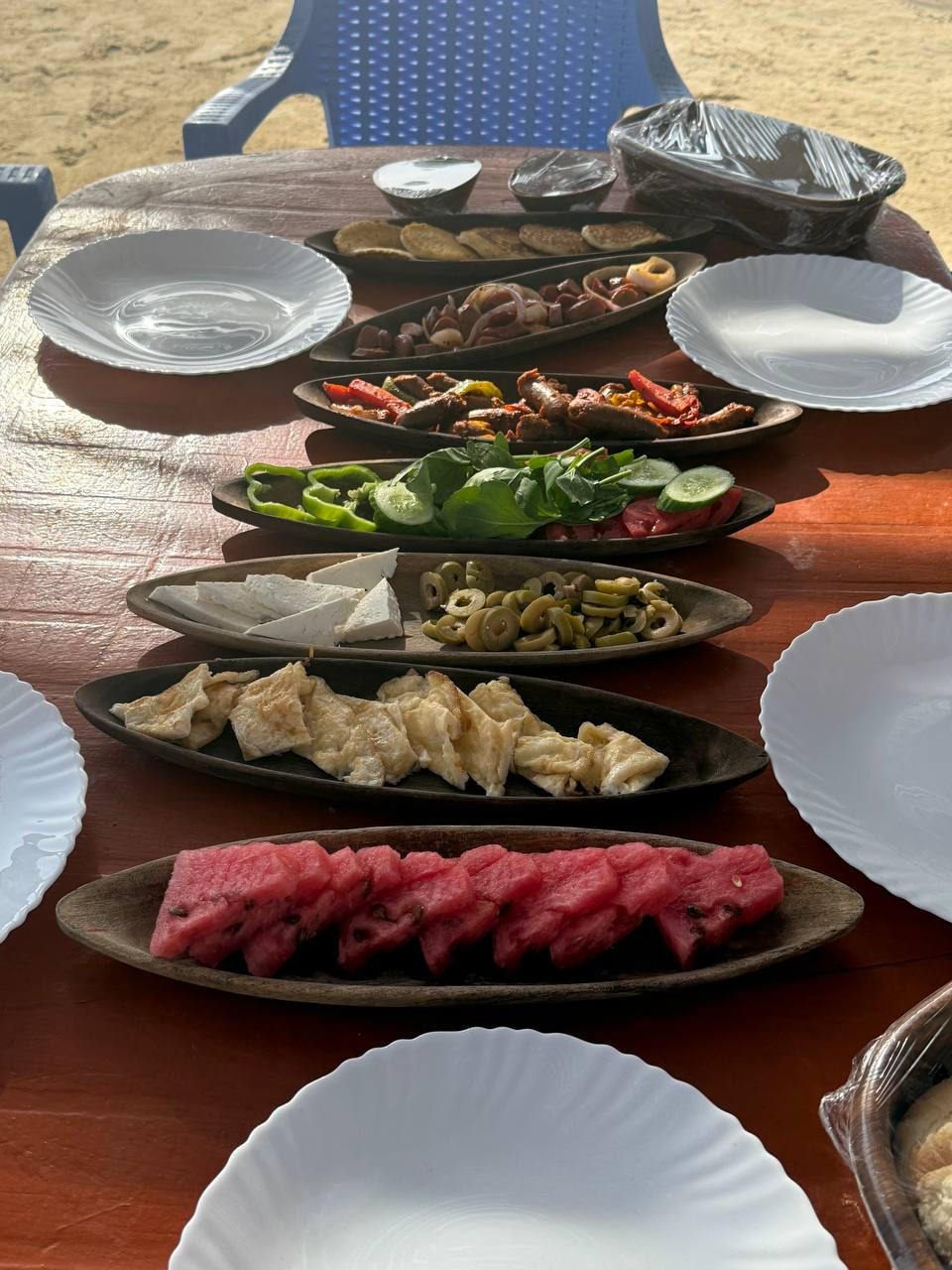Sudanese cuisine is rich, diverse, and deeply connected to the country’s culture and history. Rooted in ancient traditions, Sudanese food is hearty, flavorful, and built to provide sustenance through the country’s turbulent history.
With influences from Africa, the Middle East, and beyond, Sudanese cuisine is a delightful exploration of bold flavors and unique ingredients. And despite the challenges that the country has faced in terms of conflict and instability, Sudanese food remains a symbol of resilience, a reflection of the land and its people.
Click to read about South Sudanese Cuisine.
Table of Contents
The Heart of Sudanese Cuisine: Sorghum, Stews and Flatbreads
At the core of Sudanese cuisine is the staple grain: sorghum. This ancient grain is the base of many traditional dishes, particularly kisra—a type of flatbread that’s thin, spongy, and served alongside rich stews. Kisra, made from sorghum flour, is a national dish that’s essential in Sudanese cuisine. It’s a bit like an edible spoon, used to scoop up mullah, a flavorful stew typically made with lamb, chicken, or vegetables. Mullah is the hearty base of Sudanese meals, packed with spices and slow-cooked to tender perfection. The stew often includes fenugreek, coriander, and garlic, creating a deep, aromatic flavor profile that perfectly complements the Kisra.
Aseeda, another significant dish in Sudanese cuisine, is a porridge-like dish made from sorghum or wheat. It’s a comfort food often enjoyed for breakfast or dinner, served with savory stews or mullah. It’s a meal designed to fill, nourish, and sustain—a culinary representation of the country’s resilience.



Sudanese Staples: Foul, Tamiya and Rice
Breakfast in Sudan is commonly centered around foul medames, a dish made of slow-cooked fava beans. It’s a simple but satisfying meal, often served with tamiya (Sudanese falafel), which is a fried ball of mashed beans or chickpeas. This dish reflects the country’s love for legumes and beans, which are affordable and filling, making them a crucial part of the diet, especially in more challenging economic times.
Rice also plays an important role in Sudanese cuisine, often served with stews and meats. Roz Bil Mahshi, rice stuffed with spiced vegetables and sometimes meat, is a flavorful dish enjoyed during special occasions. The combination of rice, spiced vegetables, and meat creates a rich, satisfying meal that represents Sudan’s communal approach to eating—where family and friends come together to share food.
Sudan’s Rich Meat Dishes
Meat, especially lamb and goat, is an important part of Sudanese cuisine, though due to the country’s ongoing conflicts, access to these meats can be limited. Traditional dishes like shorba (a lamb or chicken soup) and kebab (grilled meat skewers) highlight the Sudanese love for grilling meat over open flames. Meat in Sudan is often slow-cooked, with spices and herbs used to create deep, flavorful stews that provide comfort and warmth, especially during colder months.
In Sudan, grilled meats—particularly goat and lamb—are frequently enjoyed at gatherings, and the skewers of meat are often cooked over wood fires, imparting a smoky flavor that adds richness to the dish. Though meat is highly prized in Sudanese cuisine, it’s often reserved for special occasions due to its higher cost, a reflection of the economic challenges many Sudanese face.



The Influence of Spices and Flavors
Spices are essential to Sudanese cooking, with the most common being cumin, coriander, fenugreek, and turmeric. The food is aromatic, with bold and complex flavors that showcase the region’s history of trade and cultural exchange. Berbere, a blend of spices from the Horn of Africa, is often used to season stews and meats, lending a unique kick to many dishes.
Chili peppers are also popular, adding heat and intensity to the food. Sudanese cuisine isn’t overwhelmingly spicy but uses these ingredients in balance to create dishes that are rich in flavor and not overly fiery. Additionally, garlic, ginger, and onions are used liberally in Sudanese cooking to build depth and aroma.
Drinking in Sudan: A Secret Sip in Bir Tawil
When it comes to drinking, Sudan follows strict Islamic laws that prohibit the consumption of alcohol. But, like many places where alcohol is banned, there’s always a workaround. In some of Sudan’s more remote regions, particularly in Bir Tawil, you might come across homemade moonshine made from dates. Locally known as date arak, this brew is often crafted in underground kitchens and passed around among friends in quiet, hidden gatherings.
The taste of this date-based moonshine is surprisingly smooth, a far cry from the rough, unrefined methods of production. It’s not something you’ll find in any restaurant or bar, but a little local know-how can lead you to a sip or two of this unofficial national drink.
Click to read about Sudanese drinks.





Sudan’s Street Food Scene
Sudanese street food is vibrant, varied, and full of character. In cities like Khartoum, the food stalls are teeming with life, offering a wide array of dishes that provide a true taste of Sudan. Street vendors often serve up tamiya (Sudanese falafel), kebabs, and foul. One of the highlights is the shawarma, a popular street snack that features juicy, spiced meat wrapped in soft flatbread, often served with a tangy yogurt sauce or garlic paste.
The food on the streets of Sudan is often simple but full of flavor, making it a great way to sample authentic local dishes. The heat of the grill, the smell of sizzling meat, and the colors of the fresh vegetables create an immersive, sensory experience that you won’t want to miss.
Click to check out my Sudan Tours.

